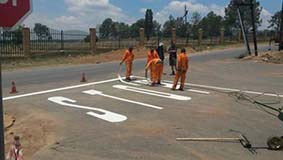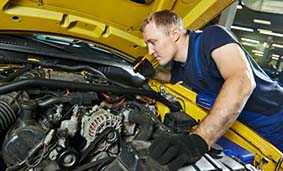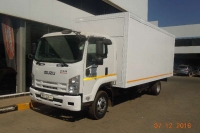 You have a choice. Make your brakes last longer, or wear them out quickly.
You have a choice. Make your brakes last longer, or wear them out quickly.
If you wisely follow these money-saving driving techniques, which won't clog the trafiic, and few other drivers will notice, you will greatly improve your driving experience.
These tips should help you extend the life of your brakes, if not then the problem is either with your vehicle, your mechanic or poorly chosen or installed brake parts. On the other hand, the problem could be geographic, if you happen to live in mountains or drive through mountains frequently
1. Speed Kills.
The mortal enemy of brakes are stops from high speed, and a little more speed hurts more than you can ever imagine. For example, stopping from 100 kph rather than 80 kph forces the brakes to dissipate about a third more energy. The car's motion is called kinetic energy. It's calculated by multiplying half the car's weight by the square of its speed. (For the math-challenged, "the square" means speed is multiplied times itself.) By turning energy into heat, brakes sacrifice their lives. A little less speed means a lot less kinetic energy — and brake material — needs to be transformed into heat.
2. No Lefties.
Use only your right foot on the brake pedal. I often see cars cruising at a constant speed — or accelerating away from me — with brake lights either constantly illuminated or glowing like lonely lightning bugs. By braking with only your right foot, you'll avoid simultaneously pushing both pedals. Also, it'll be easier to resist unnecessary brake taps: That left foot wants in on the action.
3. Be a Coaster.
Coasting is a surprisingly easy way to get rid of a lot of brake-killing speed. If you know you'll have to stop at the end of a freeway off-ramp, coasting from 100 down to 80 before you brake will significantly reduce brake wear. Time lost will be little or, if cars are queued ahead, none.
4. Memory Factor.
Memorize places where other drivers inappropriately slow down. Examples include hills which come as a shock to people who have been driving that same road for 10 years, and gentle freeway bends that many mistake for hairpin turns. Often, you'll have to coast down to their pace. Plan ahead and you might be able to change lanes around them. They'll re-pass you on the next downhill or straightaway, but you will have used less brakes and fuel
5. Look Up and Save.
Look far enough ahead and you'll be able to correctly time traffic lights, notice traffic backing up or see cars slowing on an incline that's just become visible. Look beyond the next traffic signal; check out the one after that and, in urban situations, the next and the next. To test how far ahead you look, draw a thin line at eye level on your windshield with a dry erase marker. On level roads, keep your focus above that line and use peripheral vision to position the car within your lane. Then erase the line before a cop asks you why it's there.
6. Don't Join In.
Many drivers brake just because the guy in front did. And the first driver touched his brake for no good reason. It'll take a bit of practice to learn to coast when others brake inappropriately, especially if you weren't looking far enough ahead.
7. Lose Some Weight.
Saying "Lose some weight" we mean don't carry unnecessary stuff. Some aftermarket parts — especially tyres and wheels — can add a lot of weight. More significantly, consider vehicle weight before your next purchase. A heavier vehicle is harder on brakes. And tyres. And fuel.
8. Flush It.
Brake fluid needs to be changed periodically . It's called bleeding and flushing. Renew your brake fluid, especially if you have an older vehicle or you purchased used one. You gain nothing if you save brake material but the insides of the system rot away. Flushing the brake fluid will make the internal components last longer and the brakes work better. Brake fluid naturally attracts water. In an emergency stop or after repeated brake applications, this moisture boils and severely reduces braking effectiveness. Moisture also promotes internal corrosion, which ruins critical rubber seals. Some vehicle manufacturers recommend renewing brake fluid every couple of years. While some mechanics challenge its cost-effectiveness, brake bleeding is an inexpensive, easy task for a do-it-yourselfer.
9. Upgrade and Specialize.
Don't complain if cheap bargain brakes wear out quickly, but, on the other hand, don't expect the most expensive pads to last forever. Today's brake pads are extremely complex. They may contain a dozen or more components, and are designed for specific uses. Brake material that best survives heavy-use, high-heat situations may perform poorly for drivers who emphasize economy. A good mechanic or auto parts store should be able to match your desires with the right brakes.
10. Be Frugal, Not Foolish.
Trying to extend brake life too long will cost big money. If metal touches metal, frugality becomes foolish. A good time to inspect brake material thickness is when you have your tyes rotated. Beginner do-it-yourselfers: With a wheel removed, it's easy to check disc brake pad thickness, as they're open for viewing. It's more difficult with drum brakes because the drum has to be removed. Other foolishness: downshifting to save brakes. Transmissions (and clutches) cost a lot more than brakes.
Did you notice that many of these tips will also save fuel and make you a safer, smoother driver? I hope so.
If you would like us to assist with marketing your business, please do not hesitate to contact us today to discuss your requirements, or request a free quotation.

 In the present economic climate in South Africa, buying a new vehicle is virtually out of reach for some owner operators, so buying a used vehicle is the only option, and may be the answer to their needs.
In the present economic climate in South Africa, buying a new vehicle is virtually out of reach for some owner operators, so buying a used vehicle is the only option, and may be the answer to their needs.

























 truck hauling crops out of his 180 acres, and then he parks it for 10 months of the year, he should buy used.”
truck hauling crops out of his 180 acres, and then he parks it for 10 months of the year, he should buy used.”




